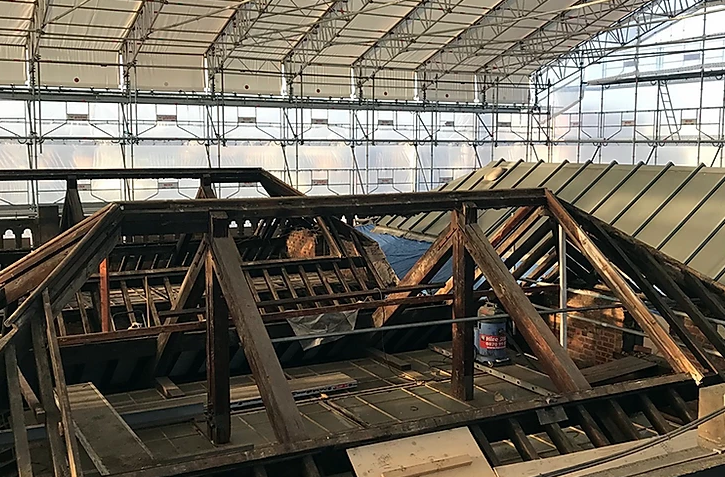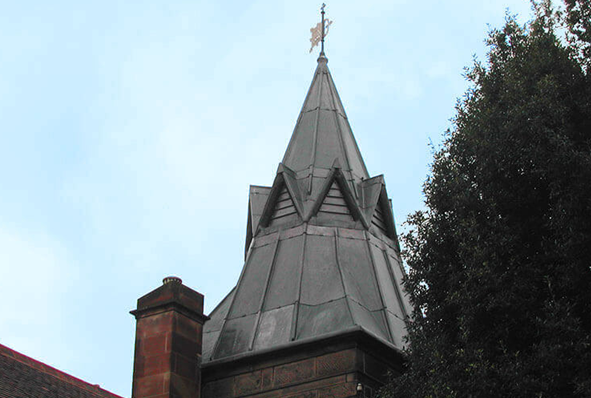Heritage Roofing
Heritage roofing - maintaining our iconic buildings
The UK is home to some of the most iconic buildings in the world, from stunning churches and cathedrals to historic stately homes. Each and every one of these remarkable feats of architecture requires regular maintenance to ensure they remain in the very best condition, allowing them to be enjoyed for generations.
Lightning Protection
When lightning strikes are you protected against this act of God?
The issue of lightning protection in churches is one that has exercised this publication for many years. In this four-part series of spotlights on the issue we will be revisiting various aspects of the subject, beginning with an overview of current thinking.
Traditional Lime
Lime: it’s better for buildings – and for the environment
It is now fairly well known that cement is not good for old buildings and that lime mortar should be used. But why? What are the advantages and what are the disadvantages? In order to begin to answer those questions it is necessary to understand the nature of traditional building, the process by which buildings used to be built, and how it differs from modern construction, the process by which we build today.
Audio Visual
Audio visual equipment in church buildings
This guidance is issued by the Church Buildings Council under section 55(1)(d) of the Dioceses, Mission and Pastoral Measure 2007. As it is statutory guidance, it must be considered with great care. The standards of good practice set out in the guidance should not be departed from unless the departure is justified by reasons that are spelled out clearly, logically and convincingly.
Read More...
CRE Events
Churches are coming under starter’s orders for CRE 25
Churches across the nation are beginning to make preparations for their visit to Christian Resources Exhibition’s CRE 25.
Insurance
You need to ensure that reasonable precautions are in place at your church to keep it safe for those who use it. To do this, you need to think about what might cause harm to people.
You will then need to decide if the precautions already in place are adequate. If they are not, you may need to identify further action to prevent any danger. When done formally, this is known as a risk assessment.
LPOW Grants
£23 million government package to support restoration of thousands of listed places of worship
Heritage Minister Sir Chris Bryant has announced that the Listed Places of Worship Grant Scheme will be extended into the next financial year, providing £23 million so that thousands of historical buildings, including churches, synagogues, mosques and temples, can carry out restoration work.
Lead Roofing
Lead is one of the oldest materials in the roofing industry and is still commonly used throughout the world today.
Lead roofing is a traditional roofing method which has been used in the industry for hundreds of years, and is therefore proven to be extremely reliable. Lead roofing, and sand-cast lead, in particular is ideal for old buildings such as churches or historical renovations, whereas milled lead roofing is a mass-produced alternative, used for precision and accuracy in homes and commercial buildings alike.
Home
Case Studies Campbell Smith and Co. Ltd
St Martin-in-the-Field, Blenheim Palace, The National Gallery
St Martin-in-the-Field

Project Overview
St. Martin-in-the-Field is a landmark. Its fine architecture and prominent location place it at the heart of the nation. Its work has valued historic tradition, but St. Martin’s has always been innovative in response to changing needs.
In January 2006 St. Martin’s embarked on a £36 million building project to restore and transform the church and surrounding buildings by creating a new sequence of beautiful, practical and inspirational spaces.
The works included cleaning, restoration, traditional coatings and gilding.
Blenheim Palace

Project Overview
Campbells won the contract for the restoration of North Portico ceiling which sits above the principle entrance to Blenheim Palace.
Due to years of water ingress the substrate and decorative finishes of the portico ceiling had been affected greatly.
The agreed scheme was to restore where possible, or replace as necessary the existing finishes which included Eye murals that were originally painted by Colin Gill in the1930’s.
This involved replacing gold leaf to cornices, mixing of colours and paints where necessary to match the existing and re-painting murals.
The National Gallery

Project Overview
During the late 1990’s a section of ornate plaster fell from the Main entrance ceiling of The National Gallery, Trafalgar Square, London. Luckily no-one was injured but a piece of the original decorative scheme created by John Crace, the well-known Victorian Artist was revealed.
Following exhaustive research to uncover the full scheme, Campbell Smith were engaged to carry out the full re-creation of the scheme, including extensive ornate stencil and gilding works. This was a great success for which Campbell Smith won the coveted Rose Bowl award from the Painting and Decorating Federation.




















